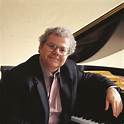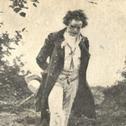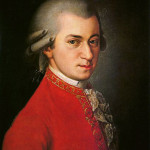January 13, 2018, the San Francisco Symphony performed a sensational concert with pianist Emanuel Ax. The variety of challenging pieces chosen for the program demonstrated the excellence of the SF Symphony and Mr. Ax, surely one of the absolute top pianists in the world.
 Emanuel Ax First on the program was the Leonore Overture, #3 (1806). This overture, written with Beethoven’s only opera in mind, has so much energy and color, the listener can absorb the revolutionary new principles of freedom embraced by Fidelio, the female character who comes to rescue her lover, a champion of liberty. These were also Beethoven’s principles; they imbue the music with the celebration of the rights of man instead of the rights of dictators.
Emanuel Ax First on the program was the Leonore Overture, #3 (1806). This overture, written with Beethoven’s only opera in mind, has so much energy and color, the listener can absorb the revolutionary new principles of freedom embraced by Fidelio, the female character who comes to rescue her lover, a champion of liberty. These were also Beethoven’s principles; they imbue the music with the celebration of the rights of man instead of the rights of dictators.
After the rousing beginning of the concert came Mozart’s Piano Concerto,No. 14, in E-flat Minor(1784). Complicated and beautiful, this concerto manages to offer inventive, complex music which is written so perfectly by Mozart that the listener absorbs its beauty rather than be transfixed by its complications. Mr. Ax transmitted the restlessness and concentrated construction without a hesitation. He so completely embodied the music that he and the SF Symphony nearly disappeared. The music became a living presence. The second movement, Andantino, came as a surprise. It was elegant, almost peaceful, an incredibly eye opening change. The Concerto ends with a rondo, Allegro ma non troppo. The rhythms are engaging; the movement sweeps the audience away to a new level of aesthetic excitement.
Matching the Mozart concerto with Schoenberg’s Concerto for Piano and Orchestra, Opus 41 (1942) was daring and brilliant. When Maestro Michael Tilson Thomas turns to address the audience, everyone present is tremendously lucky, about to be enlightened by SFS Music Director, MTT, about what we will hear. It was a very beneficial offering. In addition to describing the famous, or infamous, 12 tone method, MTT had Mr. Ax play some of the music from the Concerto as it would have been written in the traditional, major -minor system. That provided an “Aha!” moment. While I wouldn’t pretend to “understand” the composition principles, hearing that example opened a door. It was an intense, dramatic, performance. Both Mr. Ax and the SF Symphony showed that they were able to triumph in this “new” music as well as in the Beethoven and Mozart.
 Arnold Schoenberg, photograph by Man Ray
Arnold Schoenberg, photograph by Man Ray
The concert finale was Richard Strauss’s Till Eulenspiegel’s Merry Pranks, After the Old Rogue’s Tale, Set in Rondo Form for Large Orchestra, Op. 28 (1895). This piece has a special place in my musical education. In my elementary school in St. Louis County, one year, maybe during 4th grade, a Music Lady came to play music and talk about it. She played Smetana’s The Moldau and Strauss’s Till Eulenspiegel’s Merry Pranks. No Peter and the Wolf for us. Ever since that time, I have avoided Till because I remember being told that he was so mischievous, had so much delight in his practical jokes, that he was hanged. The story terrified me. Too much fun? Off to the gallows.
 Medieval woodcut of trickster, Tilll Eulenspiegel, courtesy, San Franciso Symphony
Medieval woodcut of trickster, Tilll Eulenspiegel, courtesy, San Franciso Symphony
Fortunately, I pushed that memory aside and enjoyed a performance that revealed the determined individualism of Till, a character in many German legends. The music does not involve moralistic commentary. It plays hide and seek with Till’s personality and adventures. The concert, which had begun with the inspiring Leonore Overture, closed with an emphatic exploration of a character who came to life on the outside of accepted society. The audience was completely charmed by Till and roared its approval.

 Wolfgang Amadeo Mozart
Wolfgang Amadeo Mozart